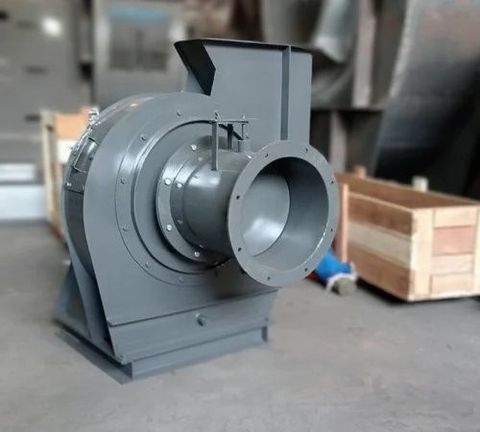Guide to Fiberglass Manufacturing Explained: The Science Behind Threaded Strength and Industrial Durability
Fiberglass, also known as glass-reinforced plastic (GRP), is a composite material made from fine glass fibers embedded in a resin matrix. It was developed to combine the lightweight properties of glass with the strength and versatility of plastics. The material exists because industries need a solution that balances strength, durability, corrosion resistance, and flexibility.
Fiberglass is widely used in manufacturing components like panels, pipes, tanks, insulation, automotive parts, and construction materials. Its threaded and layered structures allow it to withstand mechanical stresses while remaining lightweight. Modern manufacturing techniques, such as filament winding, pultrusion, and spray-up processes, enable precise control over fiber orientation, which directly impacts strength and durability.

Importance
Fiberglass plays a critical role in multiple sectors due to its unique combination of properties:
-
High strength-to-weight ratio allows structures to be strong without adding excessive weight.
-
Corrosion resistance makes it suitable for harsh environments, including chemical plants, marine applications, and water treatment facilities.
-
Electrical insulation properties make it useful in electrical and electronic components.
-
Durability and longevity reduce maintenance needs in industrial settings.
Industries affected include automotive, aerospace, construction, energy, and infrastructure. Fiberglass solves common problems associated with metal alternatives, such as rust, excessive weight, or susceptibility to fatigue. It also supports sustainable manufacturing, as its longevity reduces the need for frequent replacements.
Recent Updates
The fiberglass industry has seen notable trends and innovations over the past year (2024–2025):
-
Advanced resin formulations (2024): Low-emission, fire-retardant, and high-temperature-resistant resins have become widely used.
-
Automation and digital control (2024–2025): Automated filament winding and pultrusion machines ensure more precise fiber placement and consistent quality.
-
Sustainable practices (2025): Recyclable fiberglass composites and bio-based resins are gaining attention to reduce environmental impact.
-
Integration with IoT (2025): Sensors embedded in fiberglass structures allow monitoring of stress, temperature, and vibration, supporting predictive maintenance.
-
Lightweight infrastructure applications (2025): Fiberglass is increasingly used in bridges, rooftops, and paneling to reduce structural load while maintaining safety.
According to industry forecasts, the global fiberglass market is expected to grow steadily through 2030, with applications in renewable energy, automotive, and industrial infrastructure driving demand.
Laws or Policies
Fiberglass manufacturing and usage are influenced by regulations that ensure safety, environmental protection, and product quality:
-
Occupational Safety and Health Administration (OSHA) guidelines: Govern workplace safety for fiberglass manufacturing, including exposure to airborne fibers and resin handling.
-
Environmental Protection Agency (EPA) rules: Limit emissions of volatile organic compounds (VOCs) from resin processes in the U.S.
-
European REACH regulation: Controls chemicals used in composites, requiring documentation of risks and safe handling.
-
Fire safety standards: ASTM and ISO standards specify flammability and fire-resistance requirements for industrial and building applications.
-
Recycling and disposal policies: Many countries are enforcing proper disposal and recycling protocols for composite materials to reduce environmental impact.
Globally, governments are encouraging the adoption of eco-friendly composites, aligning industrial practices with sustainability goals.
Tools and Resources
Various tools and resources help engineers, researchers, and students work effectively with fiberglass:
-
Fiber orientation calculators: Online tools assist in designing composite structures with optimal strength.
-
Finite element analysis (FEA) software: Programs like ANSYS or SolidWorks simulate mechanical stress and thermal behavior of fiberglass components.
-
Material databases: Platforms such as MatWeb provide detailed specifications for resin and fiber materials.
-
IoT monitoring systems: Track structural integrity of fiberglass components in real time for predictive maintenance.
-
Engineering handbooks: Resources like the “ASM Handbook: Composites” guide manufacturers on processing techniques, strength analysis, and best practices.
FAQs
What is fiberglass made of?
Fiberglass is composed of fine glass fibers embedded in a resin matrix. The fibers provide tensile strength, while the resin holds them together and transfers loads.
Why is fiberglass used instead of metal in some applications?
Fiberglass is lightweight, corrosion-resistant, and electrically insulating, making it ideal for environments where metals may corrode, conduct electricity, or add excessive weight.
What are the main manufacturing processes for fiberglass?
Common processes include filament winding, pultrusion, spray-up, hand lay-up, and compression molding. Each method offers different levels of strength, precision, and suitability for specific shapes.
How durable is fiberglass?
Fiberglass can last decades in industrial applications when properly designed and maintained. Its durability is enhanced by resistance to moisture, chemicals, and fatigue.
Can fiberglass be recycled?
Yes, fiberglass can be recycled through mechanical grinding, thermal processing, or chemical methods. However, recycling practices vary by region, and new bio-based resins are making the process more sustainable.
Conclusion
Fiberglass manufacturing is a cornerstone of modern industry, combining scientific precision with practical durability. Its unique threaded strength and resistance to environmental factors make it a preferred material for automotive, aerospace, construction, and energy sectors.
Recent innovations in automation, sustainable resins, and IoT integration continue to enhance its performance, while regulations ensure safety and environmental responsibility. Understanding the science behind fiberglass allows industries to design structures that are lightweight, strong, and long-lasting, meeting the demands of today’s evolving industrial landscape.






